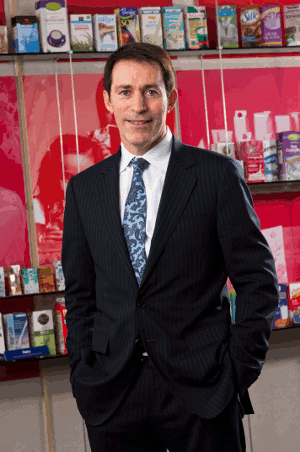
By Michael Zacka, President and CEO of Tetra Pak, United States and Canada
Last Sunday, over a billion people across the globe participated in Earth Day “to mobilize the planet from the ground up.” They turned off lights, changed to CFL and LED light bulbs, rode bikes, planted trees, reused grocery bags, washed laundry in cold water and more. And then Monday rolled around, and for some of us, it was back to business as usual.
In reality, of course, the impact of that single day does not even scratch the surface of the environmental challenge now facing our world. But metaphorically speaking, Earth day was a powerful First Act to what could be a wonderful stage production by drawing worldwide attention to universal environmental issues and setting the stage for changes needed in our own consumption patterns. Now, our collective task is to make sure the Second Act is just as strong.
In this regard, government, institutions and corporations here in the United States must now play leading roles because the simple truth is that America lives higher on the energy scale than any other country in the world. Those were the findings of a 2008 Massachusetts Institute of Technology study analyzing the energy consumption associated with different U.S. lifestyles. It concluded that Americans consumed more than double the average amount of energy used by Europeans, and in most cases many times more than individuals in all other parts of the world. Furthermore, for middle-income Americans, “a 50% reduction in energy use would require dramatic changes” that would be “unacceptable to most people.”
The researchers concluded that dramatic environmental improvements in America have to come from more than just decreasing its citizens’ usage. The problem is ingrained and systemic in the U.S. due to the design and construction of the shared infrastructures, from railways and roads to food production and educational systems. More than those in any other country in the world, America’s infrastructures incentivize energy waste instead of promoting energy conservation. So while its citizens’ efforts are indeed important, the continued collaborative efforts of government, organizations and businesses will be critical to America’s efforts to further social change and sustainability and to ‘green the environment.’
The importance of business as a catalyst for change has evolved, and is evident today universally thanks in part to UN Secretary-General Kofi Annan, who launched the Global Compact in 2000 to encourage business worldwide to adopt socially responsible and sustainable polices in human rights, labor, anti-corruption and the environment. The fact that the Compact has been remarkably successful in garnering global support substantiates this mindset. From 40 signatories at its inception, the ranks have swelled to over 10,000 businessesin over 200 countries as of March 2012.
Equally telling are the myriad companies that have achieved successes since the Compact was created, producing zero waste, reducing emissions and greatly maximizing their recycling efforts. Case studies of their efforts to be sustainable businesses abound in the Anniversary Edition of the UN Global Compact Annual Review—and the media.
Starbucks and Tetra Pak are just two examples among many in the US committed to change. But we need all businesses to have this same commitment because they can powerfully and radically affect the nation’s shared infrastructures, as well as create a culture of change that goes beyond one day of the year.
A recent case in point proves that sustainability and profitability are not mutually exclusive. It comes from Starbucks, a company known for its environmental stewardship, ethical sourcing and community involvement. At its annual meeting this past March, CEO Howard Schultzpointed out “Starbucks has long believed that there is a strong relationship between our success and the strength and vitality of the communities in which we do business.” He correctly concludes that there is a direct link between his company’s record profitability and the larger societal role it has embraced.
The same is true for Tetra Pak. We were an early signatory to the Global Compact and, like Starbucks, our social responsibility efforts have always been mission-driven well before there were any international compacts to promote sustainability. We committed and exceeded our global carbon emission reduction goal to the WWF’s Climate Savers Program, founded the Carton Council of North America to advance carton recycling and have set aggressive goals through 2020 on most key environmental issues like carbon footprint reduction, carton recycling expansion and development of packaging with 100% renewable materials.
Starbucks and Tetra Pak are just two examples among many in the US committed to change. But we need all businesses to have this same commitment because they can powerfully and radically affect the nation’s shared infrastructures, as well as create a culture of change that goes beyond one day of the year.
This notion becomes even more compelling when you consider the numbers. Even with relatively high unemployment, 243 million out of 313 million Americanshad jobs in March 2012. If all businesses embed sustainability and environmental concern in their organizational structure and corporate culture, and make it an overriding and constant priority, they will set the stage for, and engender, massive social change. That’s because when a company does a good job, its employees share its mission and values. And this can generate the kind of momentous impact that an annual voluntary effort can only hope to sustain.
Just like a theatrical production, the story regarding the environment can have many outcomes. Whether they are good or bad depends on what happens in the various ‘acts.’ Earth Day was clearly a powerful First Act. Now we need a Second Act that is even more engaging – in every sense of the word.

Recent Comments
Discount code
Alex Shimray
Thank you for sharing this! This is really...
Thank you for sharing this! This is really...
yes, nowadays more teenagers like to have a...